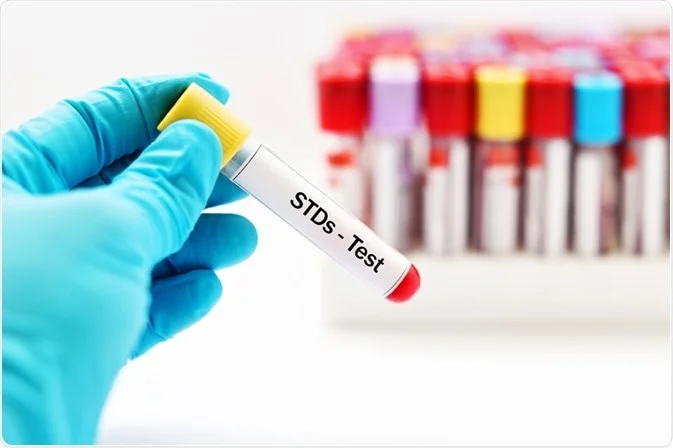Breakthroughs in HIV Cure Research: Understanding the Patients
HIV, or Human Immunodeficiency Virus, has been one of the most challenging medical conditions since its discovery. Affecting millions worldwide, it damages the immune system, leaving individuals vulnerable to infections and diseases. Over the past decades, significant progress has been made in managing HIV through antiretroviral therapy (ART). However, the ultimate goal remains: a cure. HIV cure research has seen remarkable strides in recent years, with promising breakthroughs offering hope to patients and healthcare providers. This article explores these advancements, focusing on the experiences of patients who have become pivotal in the quest for a cure.
The Types of HIV Cure: Sterilizing vs. Functional
Before diving into specific cases, it’s essential to understand the two main types of HIV cure:
Sterilizing Cure
A sterilizing cure eliminates the virus from the body. This outcome is the ultimate goal, but it remains elusive due to HIV’s ability to hide in dormant reservoirs, evading detection by the immune system and current treatments.
Functional Cure
A functional cure doesn’t eradicate HIV but reduces its levels to such an extent that the immune system can control it without ongoing therapy. Patients with a functional cure do not experience symptoms or transmit the virus.
Breakthrough Cases in HIV Cure Research
Over the years, certain patients have shown extraordinary responses to treatments, providing invaluable insights into potential cures. Let’s look at some of these cases.
The Berlin Patient
The Berlin Patient, Timothy Ray Brown, became the first person to be cured of HIV in 2008. Brown was diagnosed with HIV in 1995 and later developed acute myeloid leukemia. His treatment involved a bone marrow transplant from a donor with a rare genetic mutation (CCR5-∀32) that makes cells resistant to HIV. After the procedure, Brown’s HIV became undetectable, and he discontinued ART. He remained free of the virus until his death from leukemia in 2020.
The London Patient
Adam Castillejo, also known as the London Patient, followed in Brown’s footsteps. He underwent a similar bone marrow transplant procedure in 2016 to treat Hodgkin’s lymphoma. Like Brown, his donor had the CCR5-∀32 mutation. Castillejo has been in remission since 2019, marking him as the second individual cured of HIV.
The New York Patient
In 2022, another significant case emerged: the New York Patient. This middle-aged woman with leukemia underwent a unique procedure involving umbilical cord blood from a donor with the CCR5-∀32 mutation. While her case is still under observation, she has shown no signs of the virus without ART.
The Esperanza Patient
Identified in Argentina, the Esperanza Patient’s immune system seems to have naturally eradicated HIV without medical intervention. This rare phenomenon, known as elite control, is under intense study to understand how some individuals can achieve such outcomes naturally.
Challenges in Scaling These Cures
While these cases are inspiring, they come with limitations:
- Complexity of Procedures: Bone marrow transplants are risky, invasive, and impractical for widespread use among HIV patients who don’t have coexisting conditions like cancer.
- The rarity of Donors: The CCR5-∀32 mutations are found in less than 1% of the global population, making compatible donors scarce.
- High Costs: These treatments are expensive, limiting accessibility, especially in low-income regions.
Innovations Driving HIV Cure Research
Researchers are working tirelessly to find scalable and less invasive solutions. Here are some promising directions:
Gene Editing with CRISPR
CRISPR technology is being explored to remove HIV from infected cells or to modify cells to resist infection. Early trials have shown encouraging results, but more research is needed to ensure safety and efficacy.
Immunotherapy
By boosting the immune system’s natural ability to fight HIV, immunotherapy holds potential as part of a functional cure. Strategies include developing vaccines or antibodies that can target HIV reservoirs.
Latency-Reversing Agents
One of the biggest hurdles in curing HIV is its ability to hide in latent reservoirs. Latency-reversing agents aim to “wake up” these dormant viruses so they can be targeted and destroyed.
Broadly Neutralizing Antibodies (bNAbs)
These antibodies can neutralize multiple strains of HIV, offering a pathway to control the virus without daily medication. Trials combining bNAbs with other treatments are ongoing.
The Role of HIV in Advancing Research
Routine HIV testing remains crucial in the fight against the virus. In Jacksonville, Florida, accessible testing services are integral to early detection and treatment. Regular testing helps identify candidates for clinical trials, advancing research efforts. Organizations like Hope Across The Globe emphasize the importance of testing and education to support the community.
Patient Perspectives: Living Through the Journey
HIV cure research wouldn’t be possible without the courage and cooperation of patients participating in studies. Their stories highlight the emotional and physical challenges of experimental treatments:
- Fear and Uncertainty: Many patients grapple with the risks of unproven procedures.
- Hope for the Future: Despite the challenges, they contribute to a brighter future for others.
- Community Support: Organizations and local services, such as those in Jacksonville, Florida, play a vital role in offering emotional and medical support.
Also Learn About: How Smoking and Alcohol Impact STD Risk and Recovery
FAQs About HIV Cure Research
1. What is the current status of an HIV cure?
While there is no universal cure yet, research is progressing with notable cases like the Berlin and London Patients. Functional cures and gene-editing technologies are promising areas.
2. Why is HIV so difficult to cure?
HIV integrates itself into the DNA of host cells and hides in latent reservoirs, making it challenging to detect and eliminate.
3. How can I participate in HIV cure research?
You can consult local healthcare providers or organizations like Hope Across The Globe for information on clinical trials. In Jacksonville, Florida, HIV testing services can guide you to appropriate resources.
4. Is testing important for research?
Absolutely. Regular testing not only helps in early diagnosis and treatment but also identifies candidates for groundbreaking studies.
5. Are bone marrow transplants a viable cure for all HIV patients?
No, these procedures are highly complex, risky, and suitable only for specific cases, such as those with certain cancers.
Conclusion
HIV cure research has come a long way, offering hope to millions affected by the virus. From groundbreaking cases like the Berlin and London Patients to innovative techniques like CRISPR and immunotherapy, the quest for a cure is steadily progressing.
In Jacksonville, Florida, organizations such as Hope Across The Globe are committed to raising awareness, offering support, and providing essential services like HIV testing. Together, through research, patient bravery, and community involvement, the dream of eradicating HIV is closer than ever.
Related Tag: Free STD Testing Jacksonville





